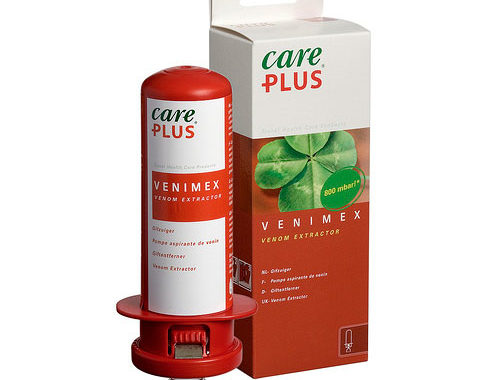Snakes (Download)
Snakes Figure 1: Rattlesnake. Source: Extracted from http://www.corbisimages.com/Enlargement/Enlargement.aspx?id=42-17307911&tab=details&caller=search 1 Snakes – Background Snakes are carnivorous, elongated, legless, ectothermic (cold blooded) reptiles (http://en.wikipedia.org/wiki/Snake) There are two main types of snakes: venomous and non-venomous The biological classifications are as follows: Class: Reptila Order: Squamata Suborder: Serpentes http://www.pitt.edu/~mcs2/herp/SoNA.html Figure 2: Snake skeleton. Source: Extracted from http://www.corbisimages.com/Enlargement/Enlargement.aspx?id=42-22402114&tab=details&caller=search 2 Identifying Snakes There are two types of venomous snakes: Hemotoxic: venom attacks the tissue and blood, and Neurotoxic: venom damages or destroys nerve tissue Ways to determine if a snake is venomous or not is the shape of the snakes head and eyes and coloring/pattern Figure 3: Venomous snake vs. Non-venomous snake identifying diagram. Source: Extracted from http://pixdaus.com/single.php?id=202783 3 Snakes and Construction Construction sites can provide ideal places for snakes to hide: High grasses Trash/debris piles Lumber piles Old equipment not in use for long periods Sites near recently cleared woodlands and brush areas Figure 4: Rattlesnakes nesting in construction drainage pipe. Source: Extracted from http://outdoors.webshots.com/photo/1158878138046536283rWWsPU 4 Hazards and Safety Concerns Snakes have a striking distance equal to ~½ of total body length Snakes strike when they feel threatened Venomous snake bites can have immediate and even life-threatening effects Figure 5: Snakebite from a Boiga dendrophila (Mangrove snake), results after one day. Source: Extracted from http://www.reptileforums.co.uk/forums/snakes/133156-snake-bite-pic-thread.html 5 Statistics Chance of surviving a snake bite is 99.8% 50% of snakebites by venomous species are “Dry Bites” where no venom is injected 95% of snakebites are to the limbs with 75% of these to the leg Out of the 45,000 estimated snakebites a year occurring in the U.S., 7000-8000 are by venomous species North Carolina has the highest state incident rate of 19 bites/100,000 persons per year National average is 4 bites/100,000 persons per year Figure 6: Snake puncture marks. Source: Extracted from http://hometreatment.net/first-aid-treatment/first-aid-for-poisonous-snake-bite/ Source: Extracted from http://hometreatment.net/first-aid-treatment/first-aid-for-poisonous-snake-bite/ 6 Snake Incidents From the OSHA Accident Investigation Data from 1990 thru 2009 there were: 0 Fatalities 1 injury incident occurring in the construction industry Incident occurred in Walnut Creek, CA While clearing debris on a two story residential project, a worker was bit by a rattlesnake resulting in hospitalization for 2 days Figure 7: Rattlesnake striking. Source: Extracted from http://www.gettyimages.com/detail/103301193/Photographers-Choice 7 OSHA Regulations General Duty Clause- SEC. 5. Duties: (1) Each employer shall furnish to each of his employees employment and a place of employment which are free from recognized hazards that are causing or are likely to cause death or serious physical harm to his employees; 1926.21(b)(4) “In job site areas where harmful plants or animals are present, employees who may be exposed shall be instructed regarding the potential hazards, and how to avoid injury, and the first aid procedures to be used in the event of injury .” 8 Safety Procedures Involving Snakes Step carefully in heavy vegetation and with a heavy foot. Snakes feel the vibrations and will vacate. Do not blindly reach into wood piles and carefully pick up debris Wear proper PPE: T hick boots with durable soles and high ankle (at least 10 ”) protection, Thick leather gloves Heavy, durable pants Figure 9: Leather gloves. Source: Extracted from http://www.lciglove.com/products/split.htm Figure 8: High ankle work boots. Source: Extracted from http://elevenmagazine.wordpress.com/2008/11/ 9 Safety Procedures Involving Snakes Assume all snakes are venomous Avoid making sudden movements which could cause the snake to strike Either remain still and wait for the snake to leave or slowly back away Call animal services to have the snake removed safely 10 First Aid For best treatment, note the coloring and head shape if bitten S eek medical treatment immediately! Treat all bites as venomous Keep the individual calm and as still as possible Apply a designated snake bite suction device to the wound if the individual is more than an hour away from professional medical treatment Do NOT cut the wound open or apply ice packs Figure 11: Proper venom removal steps diagram. Source: Extracted from http://www.interdelta.ch/index.php?page=produits&affiche=venimex&lang=de Figure 10: Venimex venom removal device. Source: Extracted from http://www.e-outdoor.co.uk/268924/products/Care_Plus_Venimex_Venom_Extractor.aspx 11 Think Safety W ork Safely 12

